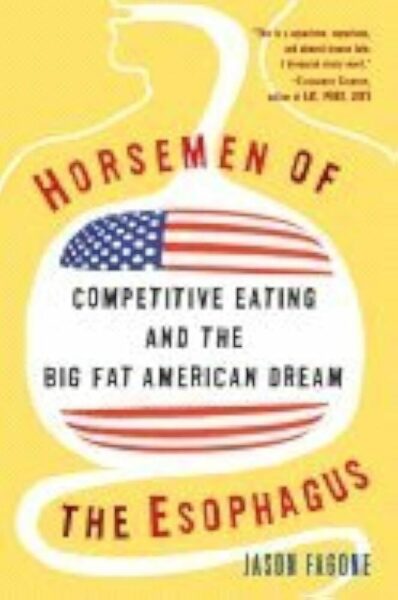The last few pages on the matter of death by fire start off sensibly enough, dealing with questions of dual punishment, and then things get a bit of the rails in an interesting way. I’m going to take it all up as one bloc, and resume with the second half of page 84 on Tuesday.
Things start off with the following mishna:
מַתְנִי׳ מִי שֶׁנִּתְחַיֵּיב בִּשְׁתֵּי מִיתוֹת בֵּית דִּין – נִידּוֹן בַּחֲמוּרָה. עָבַר עֲבֵירָה שֶׁנִּתְחַיֵּיב שְׁתֵּי מִיתוֹת – נִידּוֹן בַּחֲמוּרָה. רַבִּי יוֹסֵי אוֹמֵר: נִידּוֹן בַּזִּיקָּה הָרִאשׁוֹנָה שֶׁבָּאָה עָלָיו.
It’s a simple enough principle: if someone has been sentenced to two different types of death (whether for two offenses or for the same offense), you execute him with the more severe of the two (Rabbi Yosei dissents for issues involving same offense, where he thinks the execution method has to deal with the primacy of the offenses. We’ll get to this view later.) The principle is not dissimilar to the idea of concurrent sentencing today: a person sentenced for two offenses–say, 4 years for offense A and 6 years for offense B – might serve the sentences concurrently (i.e., 6 years – practically, the longer of the two sentences) or consecutively (6+4=10 years). In many jurisdictions, the default is consecutive sentences, and it is a judicial choice (per Oregon v. Ice). But you can’t really fault the Mishnaic logic here: ya can’t kill the same person twice. That seems pretty straightforward (“פְּשִׁיטָא!”). So how is the gemara going to complicate things?
Rava argues that the mishna deals with a habitual offender scenario: not someone who is jointly tried for two offenses, but rather someone who has already been tried and sentenced to death for the first strike (hee, literally) and, before the sentence was carried out, committed a second offense, punishable by a worse death. Rabba bar Natan cites a verse in support. It’s Ezekiel 18:10: “And he begets a violent son, a shedder of blood, who does to a brother any of these. And he had not done any of these, for he has eaten upon the mountains and defiled his neighbor’s wife, has wronged the poor and needy, has taken by robbery, does not return collateral, and has lifted his eyes toward the idols, has committed abomination.” Then, he lists the offenses: (1) begat, (2) defiled (3) lifted eyes toward idols, all of which are punishable by death, and the worst of the lot is the idolatry (stoning). But Rav Nahman Bar Yitzhak believes that all three are punishable by stoning anyway, and therefore the verse is a metaphor for righteousness.
There’s a side episode where we’re told that Raban Gamliel always cries when he gets to the aforementioned Ezekiel verse, because he thinks it’s a tall order to not fail any of the righteousness commands; Rabbi Akiva consoles him by saying that it’s enough to be righteous in one of those ways to escape death.
Let’s get back to Rabbi Yosei’s minority opinion. He apparently discusses a situation in which the same criminal act constitutes two offenses, e.g., if you sleep with your (1) mother in law who also happens to be (2) a married woman. If she was your mother in law before she was a married woman, the penalty for (1) applies. If she was a married woman before she became your mother in law, the penalty for (2) applies. But the problem is, of course, that one cannot be killed twice.
When we discussed page 80, we were introduced to the concept of the kippah, the domed torture chamber; here it makes a second horrifying appearance. Rav Yehuda explains that the kippah, at its highest, is at the person’s height, making it impossible for them to move around. Ugh. The mishna says:
מַתְנִי׳ מִי שֶׁלָּקָה וְשָׁנָה, בֵּית דִּין מַכְנִיסִין אוֹתוֹ לַכִּיפָּה, וּמַאֲכִילִין אוֹתוֹ שְׂעוֹרִין עַד שֶׁכְּרֵיסוֹ מִתְבַּקַּעַת.
Habitual offenders are to be taken to the kippah and fed barley until their stomach explodes. The problem is what counts as a “habitual offender”: does it have to be a particular offense that carries a heavenly punishment in the next world? Or do we need to offer third and fourth chances as well? The sages offer a variety of opinions:
- Rabban Shimon ben Gamliel: lashes the first two times, kippah for the first.
- Abba Shaul: Lashes for the first three times, kippah for the fourth.
- Others: whether he gets extra warnings depends on how he takes the warning for the first and second times.
The kippah torture description gets even more gruesome in the next mishna. A man who kills someone and there’s some problem with the testimony (he hasn’t been properly forewarned, or the witnesses had different vantage point, or they differ on minutiae–the point is that the particularities of evidence law are not 100% in place, but we do know enough to hold the man culpable) is to be taken to the kippah. Rav Sheshet says: first you feed the person very little, to shrink their digestive capacity, and then you stuff them with barley. Ugh!
At this point, we get the weird mishna that’ll keep us busy until the end of the sugiyah:
מַתְנִי׳ הַגּוֹנֵב אֶת הַקַּסְוָה, וְהַמְקַלֵּל בְּקוֹסֵם, וְהַבּוֹעֵל אֲרַמִּית – קַנָּאִין פּוֹגְעִין בּוֹ. כֹּהֵן שֶׁשִּׁמֵּשׁ בְּטוּמְאָה – אֵין אֶחָיו הַכֹּהֲנִים מְבִיאִין אוֹתוֹ לְבֵית דִּין, אֶלָּא פִּרְחֵי כְהוּנָּה מוֹצִיאִין אוֹתוֹ חוּץ לָעֲזָרָה וּמְפַצְיעִין אֶת מוֹחוֹ בִּגְזִירִין. זָר שֶׁשִּׁמֵּשׁ בַּמִּקְדָּשׁ – רַבִּי עֲקִיבָא אוֹמֵר: בְּחֶנֶק, וַחֲכָמִים אוֹמְרִים: בִּידֵי שָׁמַיִם.
MISHNA: With regard to one who steals a kasvah, and one who curses with a sorcerer, and one who engages in intercourse with an Aramean woman, zealots strike him and kill him. Although the Torah does not say that one who performs one of these actions is liable to be executed, it is permitted for anyone who zealously takes the vengeance of the Lord to do so. In the case of a priest who performed the Temple service in a state of ritual impurity, his priestly brethren do not bring him to court for judgment; rather, the young men of the priesthood remove him from the Temple courtyard and pierce his skull with pieces of wood. In the case of a non-priest who performed the service in the Temple, Rabbi Akiva says: His execution is by strangulation, and the Rabbis say: He is not executed with a court-imposed death penalty; rather, he is liable to receive death at the hand of Heaven.
First order of business is to figure out what a kasvah is. Rav Yehuda thinks it’s some sort of ritual implement from the temple. He who curses with a sorcerer, Rav Yosef explains, is someone who does a dueling sorcery match. The mishna goes on to say that, if one sleeps with an Aramean woman, zealots may hurt him. The business of sleeping with an Aramean woman is, apparently, a metaphor for idolatry. Rabbi Hiyya opines that marrying a foreign woman is like marrying idolatry.
This leads to a story that riffs off the Pinhas/Zimri affair from Numbers 25: 1-9. Recap: Zimri had a Midianite woman, and to stop a plague that ravaged through the people, Pinhas, grandson of Aaron, stabbed Zimri and his wife to death. The gemara expands on the story:
״וַיֹּאמֶר מֹשֶׁה אֶל שֹׁפְטֵי יִשְׂרָאֵל וְגוֹ׳״. הָלַךְ שִׁבְטוֹ שֶׁל שִׁמְעוֹן אֵצֶל זִמְרִי בֶּן סָלוּא, אָמְרוּ לוֹ: הֵן דָּנִין דִּינֵי נְפָשׁוֹת וְאַתָּה יוֹשֵׁב וְשׁוֹתֵק?! מָה עָשָׂה? עָמַד וְקִיבֵּץ עֶשְׂרִים וְאַרְבָּעָה אֶלֶף מִיִּשְׂרָאֵל וְהָלַךְ אֵצֶל כׇּזְבִּי. אֲמַר לַהּ: הִשָּׁמֵיעִי לִי. אָמְרָה לוֹ: בַּת מֶלֶךְ אֲנִי, וְכֵן צִוָּה לִי אָבִי: לֹא תִּשָּׁמְעִי אֶלָּא לַגָּדוֹל שֶׁבָּהֶם. אֲמַר לַהּ: אַף הוּא נְשִׂיא שֵׁבֶט הוּא, וְלָא עוֹד אֶלָּא שֶׁהוּא גָּדוֹל מִמֶּנּוּ, שֶׁהוּא שֵׁנִי לַבֶּטֶן וְהוּא שְׁלִישִׁי לַבֶּטֶן. תְּפָשָׂהּ בִּבְלוֹרִיתָהּ וֶהֱבִיאָהּ אֵצֶל מֹשֶׁה. אָמַר לוֹ: בֶּן עַמְרָם, זוֹ אֲסוּרָה אוֹ מוּתֶּרֶת? וְאִם תֹּאמַר אֲסוּרָה, בַּת יִתְרוֹ מִי הִתִּירָה לָךְ? נִתְעַלְּמָה מִמֶּנּוּ הֲלָכָה. גָּעוּ כּוּלָּם בִּבְכִיָּה, וְהַיְינוּ דִּכְתִיב: ״וְהֵמָּה בֹכִים פֶּתַח אֹהֶל מוֹעֵד״.
Zimri persuaded the Midianite woman to marry him by bragging about his pedigree. He brought her to Moses, saying that Moses cannot deny him the woman, as he himself is married to a Midianite (Zippora, daughter of Jethro). Everyone started crying.
וּכְתִיב: ״וַיַּרְא פִּנְחָס בֶּן אֶלְעָזָר״. מָה רָאָה? אָמַר רַב: רָאָה מַעֲשֶׂה וְנִזְכַּר הֲלָכָה. אָמַר לוֹ: אֲחִי אֲבִי אַבָּא, לֹא כָּךְ לִימַּדְתַּנִי בְּרִדְתְּךָ מֵהַר סִינַי: הַבּוֹעֵל אֲרָמִית קַנָּאִין פּוֹגְעִין בּוֹ? אָמַר לוֹ: קַרְיָינָא דְּאִיגַּרְתָּא אִיהוּ לֶיהֱוֵי פַּרְוָונְקָא. וּשְׁמוּאֵל אָמַר: רָאָה שֶׁאֵין חׇכְמָה וְאֵין תְּבוּנָה וְאֵין עֵצָה לְנֶגֶד ה׳. כׇּל מָקוֹם שֶׁיֵּשׁ חִילּוּל הַשֵּׁם, אֵין חוֹלְקִין כָּבוֹד לָרַב. רַבִּי יִצְחָק אָמַר רַבִּי אֱלִיעֶזֶר: רָאָה שֶׁבָּא מַלְאָךְ וְהִשְׁחִית בָּעָם. ״וַיָּקׇם מִתּוֹךְ הָעֵדָה וַיִּקַּח רֹמַח בְּיָדוֹ״. מִיכָּן, שֶׁאֵין נִכְנָסִין בִּכְלֵי זַיִין לְבֵית הַמִּדְרָשׁ. שָׁלַף שְׁנָנָהּ וְהִנִּיחָהּ בְּאוּנְקָלוֹ, וְהָיָה נִשְׁעָן וְהוֹלֵךְ עַל מַקְלוֹ, וְכֵיוָן שֶׁהִגִּיעַ אֵצֶל שִׁבְטוֹ שֶׁל שִׁמְעוֹן אָמַר: הֵיכָן מָצִינוּ שֶׁשִּׁבְטוֹ שֶׁל לֵוִי גָּדוֹל מִשֶּׁל שִׁמְעוֹן? אָמְרוּ: הַנִּיחוּ לוֹ, אַף הוּא לַעֲשׂוֹת צְרָכָיו נִכְנַס.
Pinhas saw what happened and remembered the halakhah according to which intermarriage should lead to being killed. He saw that an angel was spreading the disease due to Zimri’s sin, so he decided to take this on. He stepped into the tribe territory, claiming that he should be able to sleep with the woman as well, and they allowed him–at which point he took advantage of being inside and killed Zimri and the woman. The killing is said to have been aided by divinity.
From here, the rabbis move on to discussing purities and impurities, particularly sexual ones. I should mention something important here, because it’s going to come up often in our learning together.

Daniel Boyarin has a fantastic book called Carnal Israel, which has to do with the way in which rabbinic texts engage with sex, which as you’ve already noticed, they do–often. Boyarin contrasts this with the tendency in other religious texts–especially Christian texts–to renounce the body, separate the sexes, avoid the topic.
Having now read Robert Harris’ Conclave, the basis for the fantastic thriller that won Best Adapted Screenplay at the Oscars, I understand what Boyarin is referring to. Lomeli, the hero, stays away from commenting on a fellow Cardinal’s possible imbroglio with a nun by taking to heart a passage in Pope John XXIII’s Journal of a Soul:
As for women, and everything to do with them, never a word, never; it was as if there were no women in the world. This absolute silence, even between close friends, about everything to do with women was one of the most profound and lasting lessons of my early years in the priesthood.
Contrast this silence with the incessant chatter of the rabbis on this topic. Boyarin argues that the rabbis welcomed and relished coupling and found it important. Not that addressing sexuality lacks domination and patriarchal ideology–there’s plenty of that to be had–but it’s a different sort of domination, one that directly engages with sex rather than circumventing the topic.
Since Boyarin, and others, have written plenty about this, I don’t feel like I have to. So we shall forego the rest of the impurities discussion and consider this sugiyah done. You all get a sticker, and we begin a new one on Tuesday!














